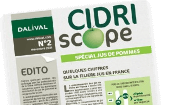 Nous contacter
Nous contacter
Advice
APPLE POLLINATORS MALUS
| Download the advice sheet | |
| « APPLE POLLINATORS MALUS » | |
 |
The use of crab apple trees (Malus floribunda) for orchard pollination was developed in France by INRAE in 1976.
The advantages of using Malus to pollinate apple trees (in comparison to commercial varieties):
– Flowering is abundant and long
– They bloom on different wood ages, especially on 1 year old branches
– To plant one variety per block
– They are less susceptible to diseases
– Pickers avoid mixing varieties
– Their weak growth allows them to be planted between trees
– Their unusual S genotype allows a better compatibilty
– The better pollination induces a better efficiency of the chemical thinning
– They pollinate triploid varieties
– They are usually not susceptible to bienniel bearing
More info:Malus should not be topgrafted in orchards, because they are susceptible to diseases of degeneration

Malus Floribunda Perpetu® Evereste P.V.R.
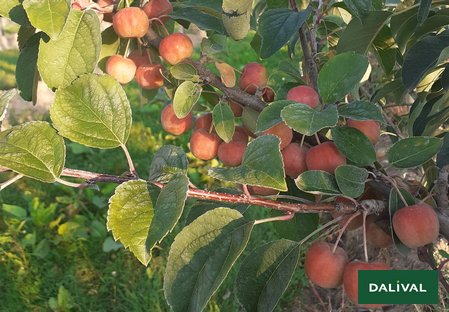
- The earliest to flower
- Origin: selection from INRAE (France)
- Vigour: average to strong
- Resistance: resistant to scab (Vf gene), low susceptibility to fireblight and powdery mildew
- Blossom: very abundant on 1 and 2 year old branches
- Pollen: very abundant. Germination power of 45%
- Fruit: small orange-red cherry-sized fruit, that hangs on the tree for a long time, which does not host codling moth, even untreated
Malus Pumila Golden Gem
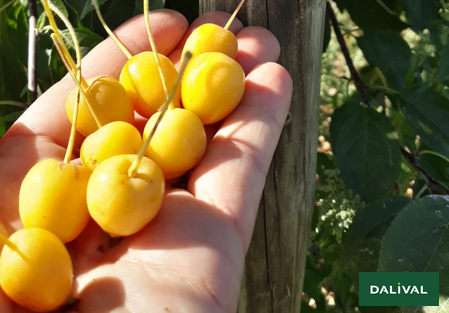
- Origin: not clearly identified
- Vigour: weak
- Resistance: resistant to scab (Vf gene). Moderately susceptible to powdery mildew. Not susceptible to fireblight
- Blossom: white, on 1 and 2nd year old branches. Starts to bloom on planting year, and the blossom covers the end of Evereste and the beginning of Baugene
- Pollen: abundant, nearly too attractive to bees. Average germination power 48%
- Fruit: small sized orange yellow
Malus Baugene P.V.R.
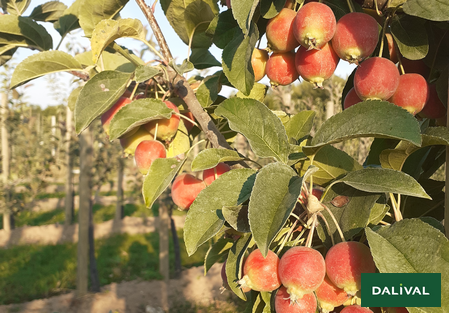
- Origin: selection from INRAE (France)
- Vigour: weak
- Resistance: resistant to scab (Vf gene)
- Blossom: white, which starts after Evereste
- Fruit: orange
Malus Golden Hornet
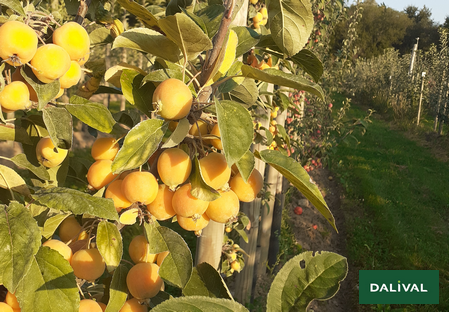
- Origin: UK
- Vigour: average to strong but not many branches
- Resistance: low susceptibility to scab and to fireblight
- Blossom: white, abundant and not long. Some sources indicate a susceptibility to bienniel bearing
- Pollen: very abundant, germinates even in low temperatures
- Fruit: bright golden yellow
Malus Bauflor P.V.R.
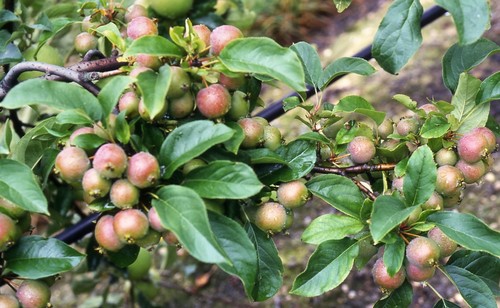
- The latest flowering
- Origin: selection from INRAE (France)
- Vigour: weak
- Resistance: resistant to scab (Vf gene)
- Blossom: white and late. Moderately susceptible to bienniel bearing
- Fruit: cream colour


 English
English Français
Français Deutsch
Deutsch Español
Español Italiano
Italiano Русский
Русский Polski
Polski





